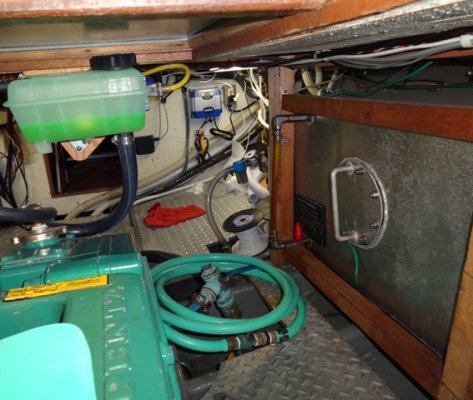I have to ask, as I have had a few rolls that rather shook people up and scatter things about the boat. From what I have been reading here and a couple of other posts, I could look to reduce some of the "sharper" rolls by having a bit more "ballast" if it was distributed more to the outer edges and a bit above the waterline.
Over the last couple of years I have reduced the average fuel loading because I really do not use that much in 1 year, and do not want to be carrying 250 gallons of diesel around just getting old and collecting moisture.(especially FlyWright's kind)
I also do not recall having as much roll when I brought the boat north after purchase in Alameda; probably about 2/3 full at that time.
As you can see from the picture, my tanks on a 34' are about centered on the waterline and 150 gal. each side.
Am I trading fresher fuel for a more "rolly" boat?

